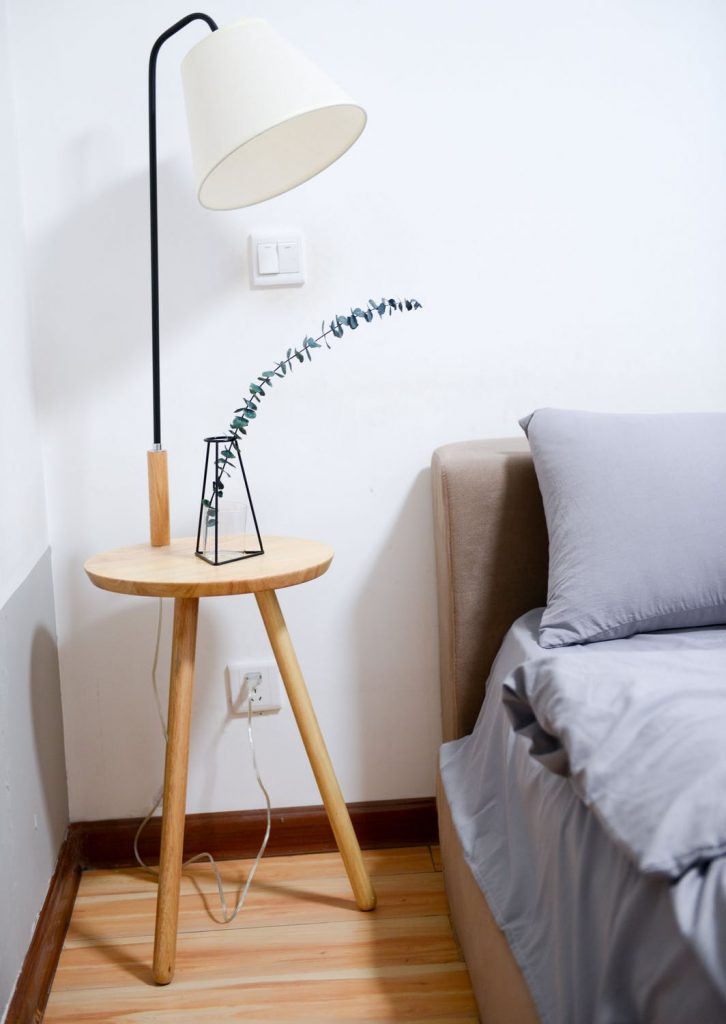No one wants to have bed bugs in their home. They are unpleasant pests that are dangerous for our health. They feed entirely on human blood, hide really well, and are hard to get rid of.
Usually, they hide during the day and come out at night when everyone is asleep. That way bed bugs feast with no interference, and we wake up covered in itchy bites in the morning.
Given that they can spread diseases and infections, it makes them extremely dangerous to us. That is why we need to be very conscious and careful when dealing with them. Hopefully, bed bugs are not impossible to kill.
There are a few pest-control methods that will help you against such an infestation in your home.

Heat
Using heat treatment is a very effective way to get rid of bed bugs in your home naturally. By exposing the infested areas to high temperatures, you can kill both the pests and their eggs.
A very useful and practical way to apply this method is by steam cleaning. You should steam clean all areas of your home, including the bed, curtains, carpets, and any other hiding places and fabrics.
The reason is that in the presence of excessive heat, bed bugs die. Thus, heat treatment is an effective method of eliminating them.
To use heat treatment, you’ll need to raise the temperature of the infested room to at least 120°F (49°C) for at least 90 minutes. That temperature is high enough to eliminate all stages of the bed bug life cycle. That includes adults, nymphs, and eggs.
Some ways to use heat for bed bug infestation
- Direct heat: One way to kill bed bugs by using heat is by using a portable heater. This is helpful if you want to raise the temperature of a room or a small area. This method works best for small outbreaks, and it is most effective when the infested items can be moved and placed directly in front of the heater.
- Steam cleaning: You can also try steam cleaning as an option. You only need a steam cleaner to generate hot steam that you will apply directly to the infested areas or items.
- Professional heat treatment: In situations of a larger infestation, it might be necessary to hire a professional pest control company to perform a bed bug treatment. In those cases, large heaters are used to raise the temperature of your entire home to the necessary level, so all bed bugs can be killed. Despite that, it is much faster and more effective than other heat-based methods, but it is also more expensive.
Chemicals
Using chemicals and pesticides can be effective at eradicating bed bugs. However, such products carry some risks as well. While using them can help eliminate pests, they are potentially harmful to both the environment and people.
Some chemicals, like pyrethroids and neonicotinoids, are synthetic and are commonly used for bed bug control. The way they work is by interfering with the nervous system of bed bugs.
Others, like carbamates and organophosphates, are a type of insecticide that can also be effective in killing them. However, it’s important to note that not all chemicals can help you against bed bugs, as some may have developed resistance to them.
It is good to note that whenever using chemicals, it’s important to follow the instructions on the label. Additionally, you need to take appropriate precautions, such as wearing protective clothing and avoiding exposure to them.
Tea Tree Oil
Tea tree oil is a good natural solution for bed bug treatment. It has a powerful aroma that bed bugs find unpleasant. You can use the oil as a repellent and a pesticide. It has been shown, in some research, that spraying tea tree oil on infested areas can be effective in killing bed bugs.
Of course, you need to dilute the oil with water before proceeding with the spraying. This method can be highly effective when combined with heat treatment.
Of course, it is crucial to note that tea tree oil should not be used undiluted. It can cause skin irritation and other unpleasant side effects. Before use, you should spot-test it in a small area to make sure it will not cause any damage to the surfaces or the furnishings.
You need to be patient and persistent with this method, as it might take multiple applications to kill all the bed bugs effectively. Combining tea tree oil with heat, such as steaming, can increase its effectiveness.
Regular cleaning and use of the spray can also help prevent future infestations.
Vacuuming and Ironing
Vacuuming the entire property thoroughly and ironing your clothes and bed sheets after washing is crucial when fighting bed bug infestation. Vacuuming is an effective way to suck in and suffocate the bed bugs that might hide in your home.
The suction power the vacuum cleaner has can reach areas that can be difficult to reach. Such can be the crevices in your furniture and baseboards or walls.
Regular cleaning that includes vacuuming will reduce the number of possible bed bugs in your home. Along with making it difficult for them to hide and thrive.
While with ironing, the heat generated by the iron can kill bed bugs that might hide in your clothes, bed sheets, or upholstery fabrics. The ironing should be done after washing them, while they are still slightly damp.
The steam produced by the iron will increase its effectiveness. Remember to use the high heat setting and iron both sides of the fabric. That way, you ensure that all the bed bugs are eliminated.
Bottom Line
While these methods alone might not completely eradicate a bed bug infestation, they can always be helpful in combination with other measures. It is more important to take action before the infestation spreads through your home.
Keep in mind that a bed bug infestation is not a joke, and it can spread in just a couple of weeks around your whole house. Of course, if the infestation gets out of control, you can always contact a professional pest control company to help with the matter.






